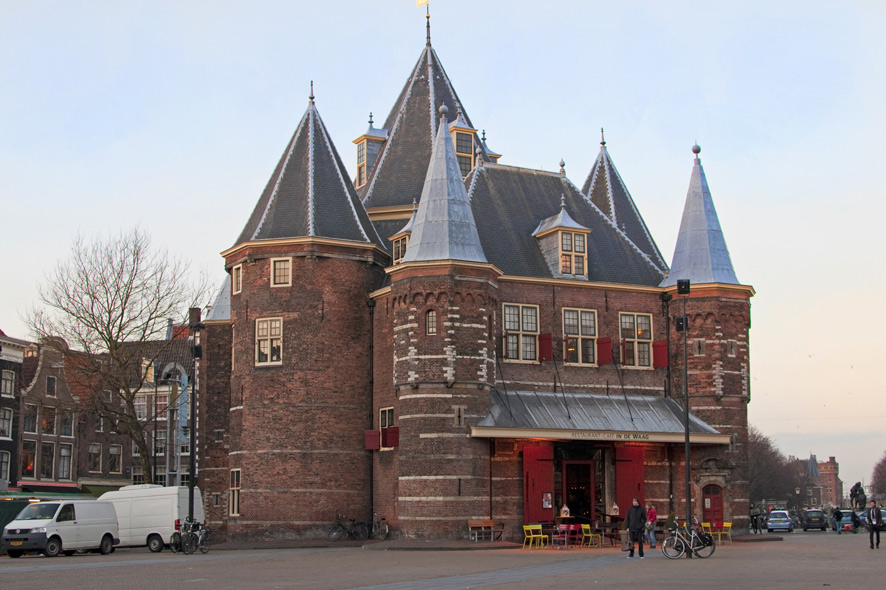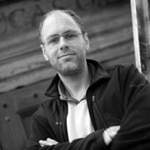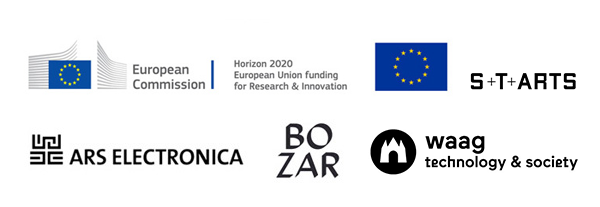The STARTS Prize awarded by the European Commission seeks projects situated at the nexus of science, technology and the arts. There are two categories, and each winner is honored with €20,000. Entries can be submitted online to https://starts-prize.aec.at/; the extended deadline is March 13, 2017! The Waag Society, Ars Electronica and BOZAR are the lead partners in the STARTS network. In this interview with Waag Society founder Marleen Stikker and Lucas Evers of Open Wetlab, they talk about where these three areas overlap, and how the interaction among them has developed since the Waag Society was launched over 22 years ago. Plus, they elaborate on the great opportunities that open up for artists as well as scientists and engineers when they peer beyond the confines of their own discrete disciplines and jointly derive impetus from an overarching force—curiosity.
What’s your understanding of the collaboration between science, technology and arts?
Marleen Stikker: Collaboration between science, technology and the arts is much needed, as their complementary ways of looking at and dealing with technology in society creates more inclusivity, enabling technologies to become social, humane, and ecological. Bringing curiosity driven research from science, engineering and the arts together is something Waag Society is involved in since long and we clearly see the growing interest in this post disciplinary field.
Looking at the influence of information technologies on our society we think it is no more than obvious that research, development and production chains are often not only inspired by creativity and the arts but also more and more directly influenced by it. Many software, hardware and other applications now used by many, found their way to the public, to consumers, via culture. Technology is never just technology but always intrinsically cultural and understanding it as cultural, we also understand not only its use is cultural and creative but also its making.
“Where the techno-sciences create an understanding about how to make technologies work as such, collaboration with the arts can help understand the social workings and consequences of technology, thereby embedding them in societies in a sustainable way.”
What do these fields have in common nowadays?
Lucas Evers: Technologies are complex nowadays and in order to further develop them imagination and creativity are needed to understand their societal impact and how they can be used in a social and sustainable manner. Science, technology and the arts are concerned with people; whether they use technologies, how they use technologies, are they comfortable using technologies, are technologies making their lives better? These are the questions that scientists, engineers and artists all address and all address in a differing and complementary way.
For example global energy transition needs research to understand how to tap into renewable sources, which requires creativity in its design and engineering but also needs an understanding of how to make the transition social and societal. Artists can take an important role in creating the questions for such processes. Many more research avenues apply to make post-disciplinary research that can make technology more humane. The common factor in science, technology and arts is curiosity driven research that can create impact in very diverse ways, beyond just economic growth, but for instance making better public services and public spaces.

The home of Waag Society in Amsterdam. Credit: Waag Society
Waag Society calls itself the institute for art, science and technology. What has changed in these fields since the foundation 22 years ago?
Marleen Stikker: Collaborations between the arts, sciences and technology are not new, since these fields share a common root. Many examples can be given ranging from innovation in materials in visual arts, to photography, to something very specific as the vents in the architecture of Gaudi, the group of the Experiments in Art and Technologies (E.A.T.) of Robert Rauschenberg at Bell Laboratories and Symbiotica laboratories. Since the beginning of Waag Society a lot of these collaborations happened around ICT, Media technologies and the Internet, including many collaborations that happened with Waag Society.
Waag Society itself began in 1994 with The Digital City, a public access initiative and open community on the Internet, an early form of social media. The Internet was open and artists and hackers experimented and explored its potential. They gave meaning to a disruptive technology that had the ability to empower but also to control people. Today the Internet is colonized and controlled by only few dominant players. Waag Society is involved in the de-mystification of technology, revealing neoliberal algorithms and exploring ethical and sovereign open alternatives.
Currently we observe a shift that is broadening the field of technology that has an interest of artists. Often artist-initiated, one can see collaborations of artists with institutions in fields like medical care, digital fabrication workshops, science and biotechnologies laboratories, digital social innovation, hardware engineering, neurosciences and nanotechnology.
“That signifies two interesting movements: One is that the arts are appropriating immense new fields for artistic production and two is that for various reasons scientific and technological research has an interest to put its findings to the test in collaboration with artists.”
Technologies in our lives go beyond usefulness, they also represent our fears and desires – think of the feeling of a new phone, new fashion materials, hope offered by medical innovation, fear to loose privacy in social media. No one but artists understand those fears and desires best and make us understand how technologies can become emotional, but also ethical.
What kind of advice would you like to give the entrants of the STARTS Prize 2017?
Lucas Evers: Keep questioning what you do, do it together, do it by making. Understanding there are more and more areas of our daily lives that know technology, there are also more collaborations between sciences, technology and the arts needed and it is not just information and communication technologies (for more inclusion), but also new materials (creating less waste), smart cities and citizens (with smart attitudes), digital fabrication (custom, point-of-care), big data, super and even quantum computing (can it be safe?) and biotechnologies (living materials).
The STARTS Prize is to encourage artists to enter these fields and seek collaborations, but also to encourage (scientific, engineering and creative) research groups to work together with each other and with artists. We think it is needed to have an agenda and think of which direction technologies should be developed for societies that become more fair, open and inclusive and such an agenda might be good to lead your STARTS Prize project.

Marleen Stikker (1962) is founder of De Digitale Stad (The Digital City) in 1994, the first virtual community introducing free public access to the Internet. She is founder of Waag, a social enterprise that consists of Waag Society, a research Institute for creative technologies and social innovation and Waag Products, that launched companies like Fairphone, the first fair smartphone in the world. She is also is advisor to the policy strategy group of the EU.

Lucas Evers joined Waag Society in April 2007 and is currently leading Waag Society’s Open Wetlab, bringing bio art, bio design, bio technology, bio sciences and the public together to research and understand biotechnologies and the way they effect our society in a hands-on and ‘Doing It Together’ manner . He is actively involved in several projects at the crossroads of art, design, science and technology. (Photo: Marco Baiwir)
This project has received funding from the European Union’s Horizon 2020 research and innovation programme under grant agreement No 732019. This publication (communication) reflects the views only of the author, and the European Commission cannot be held responsible for any use which may be made of the information contained therein.

